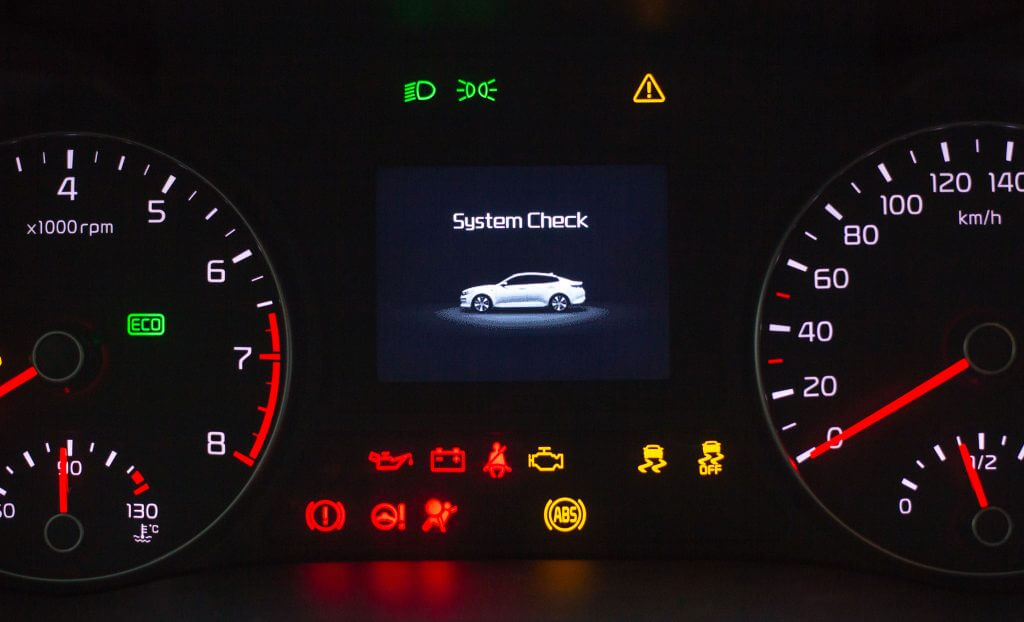Code P2098 Definition
Bank 2 has too much air or not enough fuel based on the post catalyst O2 sensor.
What Does P2098 Mean?
Combustion engines run most efficiently when they maintain an air-fuel mixture ratio of 14.7 parts air to 1 part fuel. When there are more than 14.7 parts air to 1 part fuel in the air-fuel mixture, a lean condition exists and code P2098 is triggered when this is detected using the post catalytic converter O2 sensor for bank 2. The lean condition can be caused by a vacuum leak, which introduces more air into the air-fuel mixture, a weak fuel system, which does not input enough fuel into the air-fuel mixture, or an exhaust leak which can let oxygen into the exhaust and cause a false reading from the O2 sensor. To keep the engine running properly, the powertrain control module (PCM) tries to compensate for the lean condition by injecting more fuel to the mixture in an effort to maintain the proper 14.7:1 ratio. When these adjustments become too large, code P2098 is triggered.
What Are The Symptoms Of P2098?*
- Check Engine Light is on
- Lack of power from the engine
- Rough idle
- Engine coughing
- Engine misfiring
*No noticeable adverse conditions in some cases
What Is The Cause Of P2098?
- Dirty or faulty mass airflow sensor
- Vacuum leaks – PCV hoses, vacuum hoses, intake manifold gasket.
- Weak fuel pump
- Clogged or dirty fuel injectors
- Clogged fuel filter
- Exhaust leak
- Faulty oxygen sensor
- Faulty air-fuel ratio sensor
How Serious Is Code P2098? – Moderate

It is okay to drive a vehicle with P2098 for a short period of time, but driving with this code for an extended period of time can overheat the engine and cause internal engine damage.
Code P2098 Common Diagnosis Mistakes
It is important to complete the entire diagnostic process when diagnosing P2098. Many people will overlook exhaust leaks and replace sensors when repairing the exhaust leak could fix the entire concern. Reading and analyzing fuel trims and the freeze frame data is the key to properly diagnosing P2098.
Tools Needed To Diagnosis P2098
Tools You May Already Have:
- Soapy water
- Screwdriver
- Pliers
Tools You May Need (FIXD’s top recommended picks from Amazon):
- FIXD ($59.99)
- Mass Air Flow Cleaner ($11.31)
- Fuel Pressure Testing Gauge ($25.99)
- Hayne’s Repair Manual ($19-$25)
How To Diagnosis Code P2098
Difficulty of Diagnosis and Repair – 3 out of 5
- Use FIXD to scan your vehicle to verify P2098 is the only code present. If other codes are present, they must be addressed first.
- Inspect all vacuum lines and hoses for leaks, and make sure they are properly connected. If a leak is present, you will hear a hissing sound, though it may be difficult to hear with the engine running.
- Reconnect any disconnected vacuum lines and replace any damaged vacuum lines that are leaking, then use FIXD to clear check engine light code P2098. If check engine light code P2098 is triggered again, check the rest of the vacuum lines for leaks and continue to the rest of the diagnostic process.
- Remove the mass airflow sensor and clean the sensor using mass air flow cleaner or contact cleaner.
- Reinstall the mass airflow sensor and clear the check engine light using FIXD. If the check engine light comes back on with code P2098 continue the diagnostic process.
- If you confirm there are no vacuum leaks, have a clean mass airflow sensor, and your fuel system is functioning properly, check the exhaust for leaks before and slightly after the post catalyst oxygen sensor if you find any leaks have them repaired.
- At this point, if the code still persists, you may want to consider replacing your bank 2 post catalyst O2 sensor.
Estimated Cost of Repair
For error code P2098, one or more of the below repairs may be needed to solve the underlying issue. For each possible repair, the estimated cost of repair includes the cost of the relevant parts and the cost of labor required to make the repair.
- Vacuum leak $100-$200
- Clean MAF $100
- Replace MAF $300
- Fuel Pump $1300-$1700
- Fuel pressure regulator $200-$400
- Exhaust repair $100-$200 (if welded to repair)
- Air fuel sensor or oxygen sensor $200-$300

At FIXD, our mission is to make car ownership as simple, easy, and affordable as possible. Our research team utilizes the latest automotive data and insights to create tools and resources that help drivers get peace of mind and save money over the life of their car.















